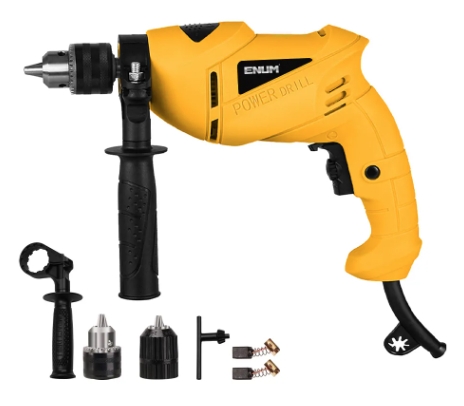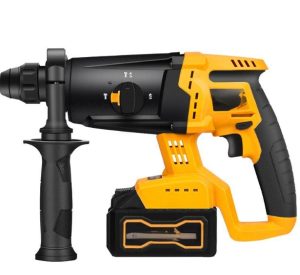Our Location
304 North Cardinal St.
Dorchester Center, MA 02124

Electric wrenches and flash drills are two common types of power tools used for fastening and drilling applications. While they may seem similar at first glance, they have distinct differences in terms of function, design, and application. In this report, we will explore the key differences between electric wrenches and flash drills, discuss their advantages and disadvantages, and provide a detailed list of popular brands and models available in the market.
An electric wrench, also known as an impact wrench, is a power tool designed for tightening and loosening nuts and bolts with high torque output. It is commonly used in automotive repair, construction, and industrial settings where heavy-duty fastening is required.
A flash drill, commonly referred to as an electric drill, is a power tool designed primarily for drilling holes in various materials such as wood, metal, and concrete. It is widely used in construction, woodworking, and home improvement projects.
| Feature | Electric Wrench | Flash Drill |
|---|---|---|
| Primary Function | Fastening and loosening nuts and bolts | Drilling holes and driving screws |
| Torque Output | High torque for heavy-duty fastening | Lower torque for drilling applications |
| Mechanism | Impact mechanism for high torque delivery | Rotary motion for drilling and driving screws |
| Chuck Type | Square drive for sockets | Keyless or keyed chuck for drill bits |
| Common Uses | Automotive, construction, assembly lines | Woodworking, home improvement, metalworking |
| Speed Control | Usually one or two-speed settings | Variable speed control for precision |
Advantages:
Disadvantages:
Advantages:
Disadvantages:
When deciding between an electric wrench and a flash drill, it is essential to consider the intended application. If the task involves heavy-duty fastening, such as tightening lug nuts on a vehicle or securing bolts in construction projects, an electric wrench is the best choice. On the other hand, if the task involves drilling holes in wood, metal, or masonry, a flash drill is the more suitable tool.
For professionals who require both functionalities, some power tool manufacturers offer combo kits that include both an impact wrench and a drill. Brands such as DeWalt, Makita, and Milwaukee provide high-quality kits that cater to various needs.

To further understand the applications and characteristics of electric wrenches and flash drills, it is necessary to delve deeper into their working principles, technological advancements, and industry trends.
Electric wrenches use a combination of rotational force and impact mechanism to generate high torque. When the tool is activated, the motor drives a rotating hammer inside the mechanism. This hammer periodically strikes an anvil, transferring immense force to the output shaft. This repeated impact action enables the wrench to loosen even the most tightly fastened bolts and nuts.
A flash drill operates using a simple rotary mechanism. When activated, the motor turns a spindle, which rotates the drill bit at high speeds. The cutting edges of the bit remove material, creating a hole in the workpiece.
The power tool industry continues to evolve, driven by advancements in battery technology, motor efficiency, and smart features. Here are some of the key trends shaping the future of electric wrenches and flash drills:
Electric wrenches are widely used in automotive repair shops for removing and installing lug nuts on wheels. The Milwaukee M18 Fuel 2767-20 is particularly popular among mechanics for its high torque output and durability.
Flash drills are essential in the construction industry for drilling holes in walls, wood, and metal. The Makita XFD131 is a preferred choice for contractors due to its lightweight design and powerful motor.
Factories rely on electric wrenches for fastening components in machinery assembly. The Bosch GDS 18V-EC 300 is commonly used in industrial environments for its precise torque control.
Homeowners and DIY enthusiasts often choose compact drills like the Ryobi P1813 for household tasks such as furniture assembly and small repairs.
Electric wrenches and flash drills serve different yet complementary roles in various industries. An electric wrench is the tool of choice for high-torque fastening applications, while a flash drill is indispensable for drilling and general fastening tasks. Both tools have seen significant advancements in technology, making them more efficient, user-friendly, and versatile.
For professionals and hobbyists alike, selecting the right tool depends on the specific requirements of the job. Whether investing in a high-performance impact wrench like the DeWalt DCF899M1 or a reliable drill like the Bosch GSB 18V-110 C, choosing quality power tools enhances productivity and ensures long-term reliability.
As battery technology, smart features, and ergonomic designs continue to improve, the future of power tools looks promising, offering greater convenience and efficiency for users worldwide.
